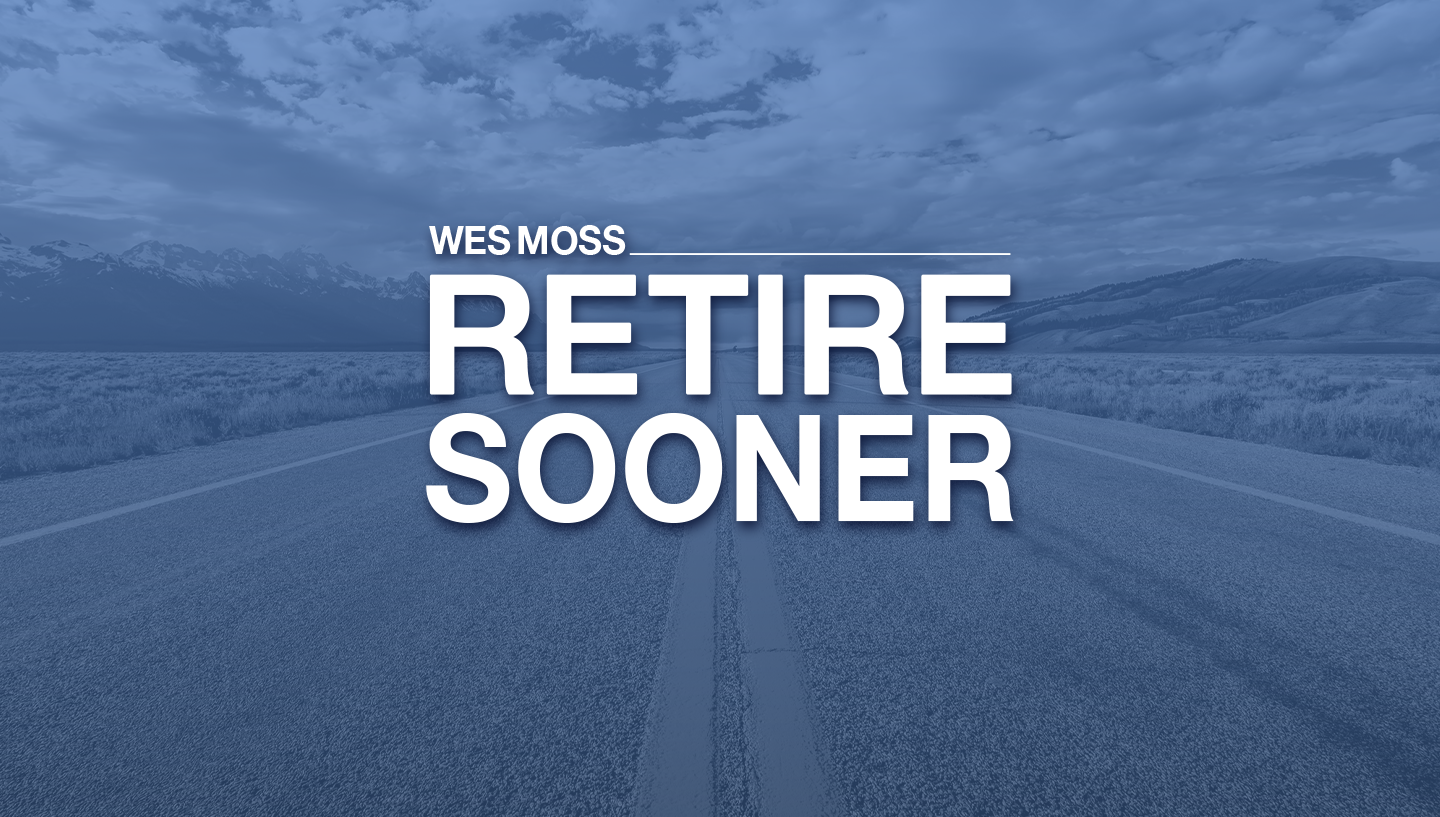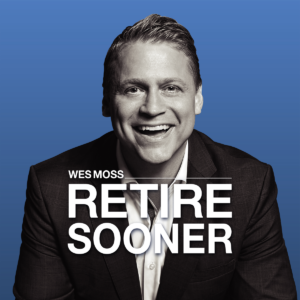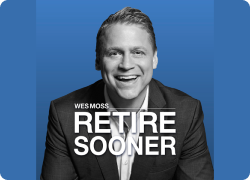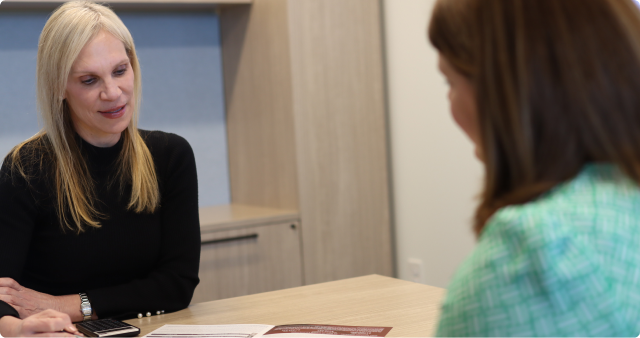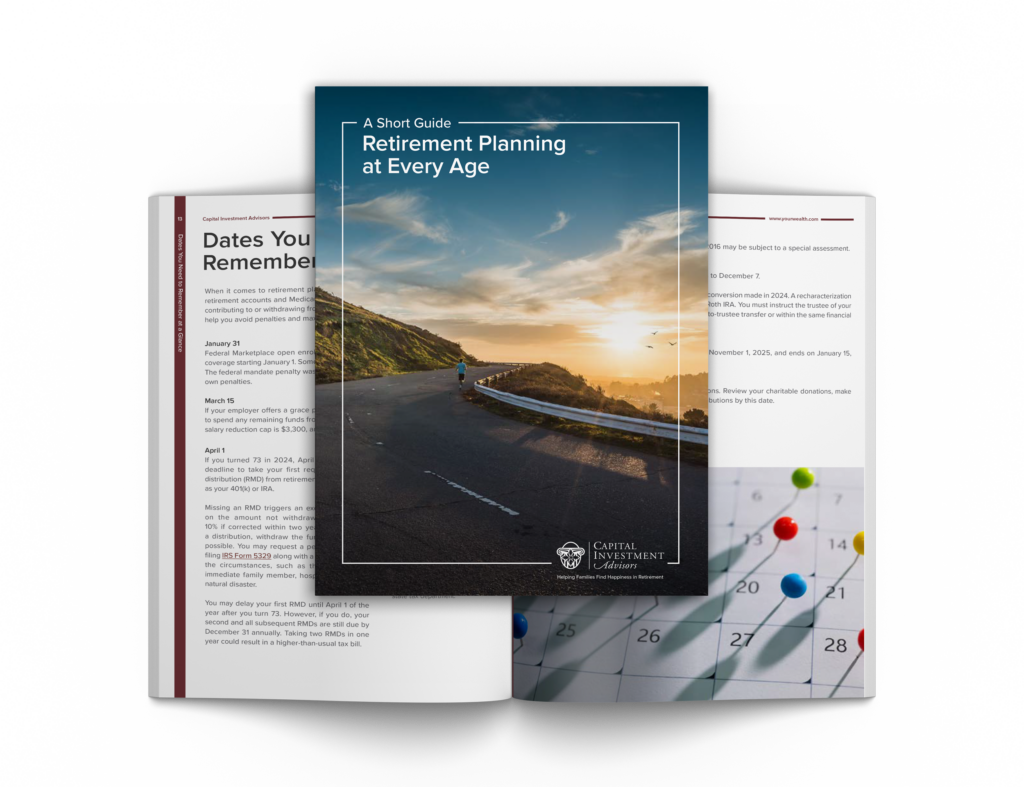Make informed decisions about your retirement plans, even in a bear market. Learn whether to cancel your vacation plans due to stock market concerns and discover how to manage your investments effectively.
Explore strategies like layering for early retirement and understand the implications of drawing down your TSP defined contribution plan. Examine rebalancing your taxable brokerage account, including ETFs and mutual funds, and learn the rules for rebalancing your Roth IRA.
Fine-tune your Roth IRA allocation for long-term growth, considering factors like pension plans and risk tolerance. Understand investment benchmarks and how to accurately assess your portfolio’s performance. Zooming out to view a longer time horizon typically provides more perspective than comparing everything to your own market high watermark.
Compare maximizing your Social Security savings for short-term growth and with the benefits of optimizing based on your specific needs and stress points. Evaluate the role of home equity in your retirement planning and its impact on withdrawal strategies. Does equity count? The answer may be both yes and no.
Strategize about moving funds from a 457B to a Roth IRA as you approach retirement, and carefully consider the tax implications. It’s usually about taxes today vs. taxes tomorrow.
Tune in to the Retire Sooner podcast with Wes Moss and Christa DiBiase for essential insights on these and other crucial retirement topics and send us your questions Here .
Read The Full Transcript From This Episode
(click below to expand and read the full interview)
- Wes Moss [00:00:04]:
I’m Wes Moss. The prevailing thought in America is that you’ll never have enough money and it’s almost impossible to retire early. Actually, I think the opposite is true. For more than 20 years, I’ve been researching, studying, and advising American families, including those who started late, on how to retire sooner and happier. Now I’m bringing in my good friend Christa DiBiase, who has worked closely with Clark Howard for many years now to answer your questions and explore what makes a happy and fulfilling retirement. My mission on the Retire Sooner podcast is to help a million people retire earlier while enjoying the adventure along the way. I’d love for you to be one of them. Let’s get started.Christa DiBiase [00:00:51]:
Today we’re going to talk about something that I’m curious about. Should we cancel our beach trip this summer? If we’re planning on going on one because of the stock market, and if there’s a bear market, what do we do? Also later on, what is the most popular benchmark that most of us look at when it comes to our investments? And I think you’re going to tell us if that is actually the right one that we should be looking at.Wes Moss [00:01:14]:
That’s a good way to put it. Right. Okay, so benchmarks. What are we judging our portfolio against or with? So you want to start with. And this really hits close to home for me. And this is, I think, a very real life situation. Well, it is a real life situation. That’s why I’m bringing it here.Wes Moss [00:01:31]:
Because I think I would not doubt that as we approach the, I guess it’s travel season all year long, right? I mean, but particularly in the summer when you may want to go somewhere, you may want to take your family, your kids, or maybe you’re going as the grandparent and you’re taking your kids and then their kids. And maybe because we live in the Southeast, it’s the, a popular destination is Florida. It’s a pretty big state. So there’s the, there’s a. There’s a beach to the east, there’s a beach to the west. Then there’s the Gulf. So there’s plenty of places to go in Florida. So it’s a popular destination.Wes Moss [00:02:07]:
So I want to talk about two kind of polar opposite things. One, the cost of a family beach trip. So that’s fun to think about. I kind of love planning these things. And then the opposite of that, which is kind of the crux of the issue here, is navigating bear markets. I got a call. There’s been a lot of turmoil this year, and really scary headlines. And stock markets have behaved erratically.Wes Moss [00:02:32]:
I would say at best you’ve got this bungee cord stock market. I don’t even know if we could call it in the roller coaster phase, because it’s not even roller coaster yet. It’s still in the shock phase. And that is scary for folks. Even if you’ve done a ton of planning, even if you have a balanced portfolio, even if you’re diversified, even if you’ve got, even if you have your dry powder and you’ve got a really solid plan, there’s something about an environment and I think back during the pandemic where everything just was really scary. And the stock market and if you’re in retirement has these convulsions and so does your portfolio. And you take that the worry about your money, which is a top worry in the world. I don’t know if it’s, I think running out of money, I think is the number one fear in the world, right beyond dying, beyond any, beyond public speaking.Wes Moss [00:03:23]:
It is widely known that run. The fear of running out of money is one of the things that we think about really, no matter how much we have. Because there’s always these worries about what happens if we get into a worst case scenario. What happens if XYZ problem of the day or the year doesn’t get worked out. What happens if the economy stays shut down and the pandemic doesn’t go away. What happens if tariffs in this case, which is a conversation that’ll dominate a lot of 20, 25, they don’t get resolved and things get even worse. And that goes. It’ll take a sound, rational plan and it can kind of just bury it.Wes Moss [00:04:01]:
And the call I got this week was from someone, let’s call it late 70s, their favorite thing in the world, they’ve been doing this for the last 10 years in retirement, is taking their kids, their adult, three adult kids and three grandkids to the beach. And it is. And once in a while I’ll get a photo for like a big fish photo from them, get a photo of with a grandchild in a boat or maybe on the beach. And it’s beautiful water. The Florida beaches are gorgeous water. You pull out a big fish. Like that’s kind of an amazing photo, right? And I think a lot of us live for that as parents and I think particularly as grandparents. We live for these moments, we live for these trips.Wes Moss [00:04:45]:
And the conversation with this couple was what happens if just everything goes wrong and our portfolio goes down 50%? And then they said and we’re canceling our beach trip with the family. I was like, wait a minute, you can’t. This is like you’ve been doing this for the last almost decade and now you’re going to cancel the trip? Well, yeah, we don’t feel like we can spend the money because the economy seems as though it’s so terrible and there’s no end in sight and our portfolio’s down and we just feel like we can’t spend the money. And by the way, that fear and the uncertainty that we all live through all the time, and it’s, I would say it’s accentuated in 2025. That’s what happens, by the way. That’s what happens in an economy. That’s what does cause a recession. It’s really the fear of, wait a minute, things aren’t going to get any better, so we’re going to not spend.Wes Moss [00:05:36]:
And when you don’t spend, then things get worse. So I’m trying to do my part here. And first out of the gate, I said, I’m going to get to this. But you do not want to cancel your beach trip. Now you can spend. Now this is really, I would say this is you and Clark. This is your category. Your expertise is telling people what they can spend and how to do a really do an amazing beach trip without spending a whole lot of money.Wes Moss [00:06:02]:
And you go down to Florida and spend, if you want, you can spend $50,000 for a week. I mean, these houses can go for 3,000. I know you’re shaking.Christa DiBiase [00:06:09]:
That’s insane.Wes Moss [00:06:10]:
$3,000 a night you can spend, you can have a private chef and you can spend a ton of money. These folks are not doing that. These folks are in the $5,000 camp. Okay, five, maybe a little more, let’s call it between five and 10. Still a lot of money. But we’re not going to go into how you can spend 50,000.Christa DiBiase [00:06:28]:
Right?Wes Moss [00:06:28]:
Normal family doing a big 14 person beach trip. It’s not that inexpensive, but we’re talking five to seven. And I said, do you absolutely do not need to cancel the beach trip. And here’s why. And this I think applies anybody listening, thinking about, hey, we were thinking about doing this. Maybe it’s not a beach trip, but it’s something with a family. It’s an expenditure that you could live without, but you really would rather go ahead and do it. So if you imagine you have a balanced portfolio, and I said, let’s just talk about going down 50% in your investments when you already have 50% in dry powder and high safety.Wes Moss [00:07:06]:
The only way to go down 50% would be for the stock market to go down 100%. And that’s just not going to happen. If you’ve got stability in half of your portfolio, the world would literally have to end. And then they said, well, at that point, we can’t go on a beach trip anyway.Christa DiBiase [00:07:25]:
Right. And I would say, like, that’s probably the actual biggest fear, that or death. I would put those in front.Wes Moss [00:07:30]:
Yeah. For a balanced, safe, diversified portfolio. Portfolio go down 50%. That means that everything would just have to go away. And. And I said, look, that’s not happening. I know we’re in a period of uncertainty. It’s a little scary, but the world is not ending.Wes Moss [00:07:46]:
And if it does, there’s no beach to go to anyway. So we don’t want to cancel our life plans because the stock market is erratic today. And as long as you have balance and safety, the only way for that to go away is for kind of the world to go away. The whole world order to go away. Bear markets last on average, so bull markets last over a thousand days. Bear markets last about 200, 250 days. So if we can get through these shorter, relatively shorter, yet painful periods of time, we’re going to get back to a point when markets are rising and everyone’s feeling like, oh, of course we can go on a beach trip, but we’re in one of those periods of time. We touched down 20%.Wes Moss [00:08:26]:
We’re technically not officially in a bear market, but I’ll call it a bear market. Certainly with all the uncertainty swirling around the world, when it comes to what’s happening out of Washington, how does that impact the global economy and the US Economy? It. As long as you have a plan and you’re balanced, you should not be canceling your plans for life. And the response I got back from this couple later that night was, I cannot believe we were thinking about canceling the beach trip.Christa DiBiase [00:08:56]:
Oh, that’s good.Wes Moss [00:08:57]:
Thank you for kind of walking me through getting looking at the world in a slightly more rational way. The world is not ending, and we’re not canceling the beach trip. And I. And I don’t want families to do that either.Christa DiBiase [00:09:10]:
Okay, we’ll go to some questions that came in for you, Wes. This one was from Bill in North Carolina. He says, Bill, I’m 60 years old. I am planning on retiring in two weeks. I have $630,000 in my TSP after the drop in the market. 630,000. I will receive about $2,000 from my pension per month. My question is, my plan is to draw approximately $2,000 a month from my TSP to make money a little easier until my house and car are paid off, which is probably five or six years.Christa DiBiase [00:09:43]:
Then I wouldn’t plan on taking any money from its P until RMDs. Is this a sound plan or will I possibly be creating financial hardship on down the road from for myself, I’m in excellent health and have a father still alive at 97. My wife will continue to work for seven to eight more years and will also receive a smaller pension. I don’t plan on taking Social Security until 67 or 70.Wes Moss [00:10:08]:
Social Security is 67 or 70. Bill, you’re worried about being a super early retiree. That’s what he’s worried about. Because you’re 60. You’re thinking, wait a minute, if I’m not Gonna Live to 97, I’ve got almost 40 years. So you really have to be careful about this. And arguably I the worry, hey, I’ve got to draw $2,000 a month right out of the gate. I’m only 60.Wes Moss [00:10:29]:
The short answer is no. I do not think he’s putting himself in peril. And here’s why. 2000 times 12 is 24k a year. 24k a year divided by 360 is a little less than 4%. 3.8%, 3.9%. So you’re turning on bill the 4% rule today and it really shouldn’t matter that you’re a little extra young because this is a rule that’s designed of money last with a ultra high probability of lasting 35 plus years. But here’s what else is happening.Wes Moss [00:11:01]:
His mortgage, which is 47 $50,000 left, that’s probably 1,000 bucks a month car payment, call it 500 bucks a month. That’s going to all go away in five to seven years. So he’s going to get back about 1500 bucks a month in spending and he’s taking two. So I think he’s really Bill, you’re only going to have to probably use the with this withdrawal rule which isn’t even touching 4%. So anything lower is even more conservative and great and I think that works. Then the pressure will be off even more in only five years. This 4% plus rule, I call it rule of thumb is meant to last 35 years. So I don’t see how you would put your Provided the TSP account is balanced and it’s got some fundamental.Wes Moss [00:11:48]:
You’ve got at least 50% in equities. That’s the rule of thumb. And then obviously stability for the other piece of it. But I don’t see how doing this for five to seven years, even until you take Social Security, which would be seven to 10 years, I think you’re, you’re fine doing that. And what the cool thing about what Bill’s doing is he’s layering and thinking about his retirement timeline and when different income streams start to come in. And that is really one of the fundamentally important ways to do financial planning. You know when your income streams come in and you know how much you’re going to withdraw from the portfolio until you get to that point, income goes up, spending goes down. And Bill, I think you’re at a great spot.Wes Moss [00:12:30]:
At least that’s my take.Christa DiBiase [00:12:31]:
And with Great Jeans, clearly.Wes Moss [00:12:33]:
How do you sell it? I’ll, I’ll take that.Christa DiBiase [00:12:35]:
Todd in Florida says, hello, Wes, I have a brokerage account that was up until recently managed by an advisor. It has a mix of ETFs and mutual funds, mostly in equities. But I want to move to a simpler three fund approach since this is a taxable account and I can’t sell and then buy without incurring some taxes. What do you suggest I do with this account to rebalance? I have a similar issue in my Roth ira, but I believe I’m able to buy and sell and rebalance within the account without incurring any taxes.Wes Moss [00:13:05]:
Todd, a couple of things. One, you’re totally right on the Roth or an IRA or a 401k, anything that’s tax sheltered, tax deferred, tax free, like a Roth. A Roth is really tax deferred and tax free as long as you’re following the conversion rules or the, or the contribution rules. But you have, you should have no worry rebalancing within the Roth. That’s no, no problem, no big deal. You can buy, sell, and you’re not worried about having to pay capital gains on the taxable account. One thing we’ve never talked about here so far in the last year, Christa, would be the wash sale rule. Todd, the wash sale rule just says if you’re selling something at a loss, you can’t turn around the next day and immediately buy it back just so you can bank the loss.Wes Moss [00:13:50]:
Remember, we’ve had a lot of questions around these direct investing and the reason direct investing, one of the main areas that makes it attractive is tax loss harvesting. You can do the same thing on your own. So you get this equity portfolio, maybe you have something in a loss if you sell it, but you still want to own it so that you’re just banking a loss to offset another gain. You just can’t buy the IRS as it’s the same or substantially similar. So if you have stock XYZ, it’s at the $10,000 loss, you still won’t own it. You can’t just sell it, take the loss and buy back the next day. It’s called the you have to wait at least 30 days, otherwise it triggers a wash sale rule. So just a thought around when you’re doing some of your rebalancing, secondly, this is where you want to bring out your unrealized gain loss tab.Wes Moss [00:14:40]:
The unrealized gain loss tab shows you how much each position is either up. And if it’s mostly stocks, it’s probably up on most of these if you’ve held them for, let’s call, the last five years. Or maybe you have some that are flat to down. The ones that are flat to down, that’s where you can start to sell without having to worry about taxes if they’re flat or lower. And that’ll help you start the rebalancing. The problem if you end up with big gains in a lot of different ETFs or funds and if you sell them just to rebalance, you better really not like those funds because you’re automatically, automatically triggering taxes. And even if they’re long term capital gain, you’re talking about 15%. If you’re in a higher income bracket, it can be over 20%.Wes Moss [00:15:27]:
So you immediately are knocking 20% off the pie if you’re doing that. So you really want to avoid that unless you’re determined to find another fund as a replacement. How do you get around this? If you do have a bunch of gains, rebalance with your new contributions. So add to some of these other areas when you’re putting new money in that you otherwise would like to own. That’s one way of getting to the funds you like, you would like to be in without having to sell the ones that’ll create a taxable gain.Christa DiBiase [00:15:57]:
Okay. Chuck in Massachusetts wrote this. I’m a 33 year old teacher paying into a pension. My wife and I also max out our Roth IRAs each year. Our Roth IRAs are with Fidelity and we invest in the 0 funds which have no fees, 1/3 large cap, 1/3 small cap and 1/3 international. We have a high risk tolerance, especially because I plan to have a pension. Our goals are to have high diversification and earn Maximum long term growth. Two questions.Christa DiBiase [00:16:27]:
One, given our goals, should we consider any changes to our allocation? And two, we are decades from retirement, but how many years from retirement should someone with a 100% stock allocation begin to dial back the risk?Wes Moss [00:16:40]:
This is. This question from Chuck is for anybody listening that has a pension. You can look at this a couple ways. If you have a pension, it’s almost your bond, it’s almost your safety side of your overall, even though it’s a monthly income. I like to almost do the math in reverse. If you have a pension of $2,000 a month, $24,000 a year, what would that equate to in say, a pot of money that you could draw the same $2,000 a per year, it’s almost a half a million dollars. So technically, Chuck, Anybody? Anyone? Teachers, municipal workers, federal workers that have pensions, you can look at that pension as a huge part of your dry powder. Now, it’s not totally the same because you can’t just take a huge chunk out, but it is ultra safe and steady, really should be for the rest of your life.Wes Moss [00:17:37]:
And if you have a survivor, benefit from it. Your spouse as well. So he’s right to. Chuck is right to think I’ve already got the safe stuff covered. And you’re super young, in his early 30s. And he has an aggressive risk tolerance. So I don’t, I don’t see any problem for someone in that situation to be 100 stocks. I like a third large, a third small cap and a third international.Wes Moss [00:18:01]:
And I don’t see any problem with that, with what Chuck has told me the caveat. And we had a question a couple weeks ago here on the show of somebody who is 60, call it 65. They’ve been pretty aggressive and they got to retirement and they’re still 100% in stocks. And then we had a 20% market correction. And when they said, wait a minute now I gotta Wes, should I be working longer? Maybe you need. So you do want to avoid that trap. So for most people, even for Chuck, that’s got this nice pension that you could count as your dry powder safety, it’s similar. You still within five years of stopping work, you want to start getting the portfolio balanced.Wes Moss [00:18:43]:
By then. If you want to take a more gradual approach to the do 1 or 2% a year for the the 10 years leading up to retirement to make sure you’re not caught at 100% in stocks the day you retire.Christa DiBiase [00:18:54]:
Great. All right, well, next we’re talking benchmarks.Wes Moss [00:18:57]:
What do you think the most popular Investment benchmark is for investors.Christa DiBiase [00:19:04]:
All right, I can’t wait to hear about it. We’ll be right back.Wes Moss [00:19:09]:
Are you facing a fork in the road and deciding between continuing your career and retirement? I’m Wes Moss and this massive life decision shouldn’t be taken lightly. Talk with my team. If you’d like help reviewing your retirement accounts and building a financial plan, we can help you review options and offer an opinion based on your best interests. You can find us@yourwealth.com that’s y o u r wealth.com. what is the most popular benchmark? When I say benchmark, I mean we’ve got, when we’re looking at our investments, you’ve got the S&P 500, the Russell 3000, the IFA, the International Index, the ACWI XUS, the Aggregate Bond index. I mean, they’re all important, but what is the most popular, do you think?Christa DiBiase [00:19:59]:
Okay, I do not know the answer to this. So when you were saying benchmark, I was thinking if people are looking at their own investments, that what they really look at first is probably year to date returns, whether they’re up or down.Wes Moss [00:20:11]:
That’s a good one. So it’s a little bit of a trick question here is that when I say popular, I mean what people are looking at, I’m not talking about hedge.Christa DiBiase [00:20:20]:
Funds or I would think S&P 500.Wes Moss [00:20:22]:
If I were to venture a gas, what would a mutual fund use? They’re trying to usually beat the S&P 500. Or if it’s a bond fund, they’re trying to beat the aggregate bond index. But the reality is for most investors, and the reason I’m bringing this up is I think there’s a giant disconnect of what’s happening in the world right now is your own high watermark, your own high water mark is what everyone looks at. So it’s not year to date, which is better than looking at your high watermark. Again, year to date doesn’t really tell us a lot. If it’s like, if it’s January 2nd.Christa DiBiase [00:21:01]:
You know what, that makes sense. I actually am guilty of that. I do that. I’m like, oh, I was at this, you know, six months ago.Wes Moss [00:21:08]:
So an inv. So the, the what humans. And it’s completely human to do. I think I’d probably do the same thing where you, what do you remember? You don’t remember a trough. You don’t remember when things are steadily going up. You remember the max your portfolio has ever been.Christa DiBiase [00:21:26]:
That’s so true.Wes Moss [00:21:27]:
That’s the most popular benchmark. Yeah. In investing. Well, I’m down 6%. I’m down. Well, wait a minute. And the reason I wanted to bring this up, Christa, is that here we are in a pretty tumultuous year. Stock market roller coaster, bungee cord up and down and then going back to the worry around, I’ve got, hey, I’ve got to cancel all my plans for the year and not spend any money because of tariffs and the economy.Wes Moss [00:21:55]:
There’s just this general sense of fear and uncertainty that’s higher than normal. Well, what does that do? It brings this lens to your worldview is wait a minute, things are really bad. And then you look at your portfolio and you look at your benchmark, which is your high water mark and you say wait a minute, I’m down from the high water mark. This is terrible. My investments must be doing terrible. And then I think about why that’s so wrong is that if you go back over the last year and I’ve had this conversation with families I’ve worked with over and over and over again, well, hey, get, how do you think you’ve done over the last year? Well, the answer is usually pretty good because if you look at the s and P500, even though it’s down from its all time high, still up about 6% over the last year. Aggregate bond index again, another benchmark to look at, the total bond market index of Barclays Aggregate bond index up around five, five and a half percent on the year. So if you have a balanced portfolio, guess what, you’re probably up 4 to 6, maybe 7% over the past year.Wes Moss [00:23:05]:
Not year to date, but over the past 12 months. It’s funny when I’ll have these conversations and somebody thinks everything’s going terrible and it’s the world is bad and my portfolio has to be and they wait a minute, oh, we’re up over the last year. And that changes the perspective.Christa DiBiase [00:23:21]:
It makes sense. Like, I guess it’s like it reminds me of, maybe this isn’t the best analogy, but price is right. Remember the mountain climber thing where the mountain climber go up, up and up. So if you’re going up and down and up and down, but you’re still overall going up, you just don’t want to fall off the cliff. Like then you lose.Wes Moss [00:23:37]:
So we think about the benchmark to look at. There’s a little bit of a trick question. Benchmarks are really looking at different indices. S&P 500, Russell 3000, international, et cetera, bond indexes. But really, most people are looking at their own personal amounts, their own high watermark. And it’s important particularly, and it really hit me is that right now I’m seeing a big disconnect of people thinking things are really bad when really over the past year it’s been a pretty okay year, I would say. It’s not amazing, but still okay. And that, that is the lesson here is that when we’re looking at our returns or looking at our retirement portfolio, the further out we go, the more rational we can behave.Wes Moss [00:24:20]:
And looking over the past year is infinitely better than looking at the high water mark to where you are today. Because if you think about this, you’re, you’re almost always going to be down from your higher watermark. Unless you check your portfolio on the particular day, the market happens to make an all time high in the history of the world, 99% of the time you’re down a little bit from your high water mark. And that’s just maybe to your prices. Right. Mountain climber analogy. But more is better. So one year is good, three years is better, five years is better.Wes Moss [00:24:51]:
And then 10 years would be even a better benchmark to look at, to see how your investments are. And I think that’s just the lesson, the takeaway. If you think things are terrible, take a look at how you’ve done over the past full year. Take a look at how you’ve done over the past five years as an investor. Take a look at the last 10 years. And I think that’s a better, more accurate way to get to get some perspective around investing. I think it really works and helps us through these tougher, tougher market environments.Christa DiBiase [00:25:22]:
Awesome. Okay, we’ll go to questions now. This one came in from Joanie in Georgia. I’m 65 and I’ve been saving all of my Social Security for a little over a year. I will continue to save until I’m no longer able to work. Currently, I live comfortably off of less than $20,000 a year in income. My monthly Social Security is not great, but it allows me to have accessible savings, something I’ve never had before. And I would like to use the savings once I retire to supplement my monthly Social Security amount.Christa DiBiase [00:25:49]:
What’s the best way to grow my savings short term? That’s four to five years. I do understand that my Social Security would have continued to grow if I had not taken it. But that train has left the station and there is no going back now.Wes Moss [00:26:02]:
I love Joanie here. This is good. Jodi. The short answer is, sure you’re right, your Social Security could have been growing at 6 to 7% a year. Remember, it grows at about 8% a year. If you wait from your full retirement age to 70, she’s maybe a little bit before that age 65. So she’s still not Joanie, you’re still not your full fra. But you’re right.Wes Moss [00:26:23]:
The horses left the barn, the train has left the station, the ship has left the port. Doesn’t matter. She’s already started. I think that when we’re talking about Social Security, there is often, and rightly so, the question around maximization. How do I get the most Social Security? Which totally makes sense. But when it comes to your Social Security, our Social Security, personally, for our overall planning, it’s really about optimizing it. And this is such a good example of someone who took Social Security for a lot of different reasons. Joanie, you’ve never had a cash cushion.Wes Moss [00:27:00]:
Guess what? Now you do. That is potentially much more powerful for her mental state around peace of mind than a slightly higher payment if she had waited several more years. So, Joni, I like the way you’re doing this. It’s a cash cushion. What do you do with it? It’s a pretty short horizon, four to five years. So you could go two ways with this. One you could consider just a good old fashioned money market. Right now those Yields are around 4% even if you’re in a government money market.Wes Moss [00:27:29]:
I was checking CD rates the other day. You can find banks with four and slightly higher CD rates, but a lot of the bigger banks are less than that. So I almost like the money market. The other, I would say this is a step up in overall risk. But if you’re going to use this money over time like a retiree would, pulling from the portfolio, you may want to consider some sort of balance. A half stock, half bond, highly diversified portfolio with that kind of balance. Because really the horizon for you, Joni, it’s really not just four to five years, it’s really the rest of retirement. So I would look at maybe a balanced approach or to say super conservative, just a money market over the next several years.Wes Moss [00:28:13]:
But Joanie is optimizing, which in my, in a lot of cases, my opinion, better than just purely maximizing.Christa DiBiase [00:28:22]:
All right, this came in from Wayne in New Hampshire. Is the equity in your home taken into account when calculating your 4% withdrawal in retirement? Thanks for all your great advice.Wes Moss [00:28:33]:
Short answer is no. No, Wayne, it is not. You can’t live in retirement. You can’t take shingles off the Roof to Kroger and pay for groceries. So you can have all the equity in the world. You can have a $2 million house paid for, zero money in your investment account. And things are looking pretty rough. And of course you go get a loan.Wes Moss [00:28:59]:
But there’s the reality here is that 4% rate of withdrawal rule does not include the equity in your home. One of the happy retiree formulas is to not have a mortgage, but that’s in addition having multiple streams of income. And call this the, depending on how you’re looking at it, 750,000 to a million and a quarter of liquid assets. Now, Wayne, on the other hand, I would say there’s a huge however, and a huge but here is that your home equity does matter, and it can play a huge role in your overall planning. I was meeting with a family this past week that had a couple of rental houses up on a lake and a lot of equity in the primary home, no equity in one of the houses in the lake, and a fair amount in one of the other ones. And he’s having to take a little bit more than the 4%. He doesn’t like it. It feels uncomfortable.Wes Moss [00:29:51]:
He feels a little imbalanced. But his plan over the next couple of years is to say, look, I don’t need all of these properties and a couple of them have some real equity. So I’m going to sell one, I’m going to unlock the equity, and then that goes into my liquid amount. And all of a sudden now the, the percentages work out on the withdrawal rates. So I would say that. So, a, you can think of it just selling, in this case, moving to another one of your properties. If you don’t have another property, downsize it. So if you have a ton of equity in a house, then it stands to reason that you could go to a less expensive house, take some of that home equity that goes into the liquid bucket that provides the income you’re looking for.Wes Moss [00:30:32]:
So the short answer is no, it doesn’t count. But it absolutely counts all at the same time.Christa DiBiase [00:30:37]:
Okay. Dawn in New York says I have approximately $200,000 in a public employer. 457B.Wes Moss [00:30:43]:
Hold on. Is this dawn in New York?Christa DiBiase [00:30:45]:
$200,000.Wes Moss [00:30:46]:
200K?Christa DiBiase [00:30:47]:
457.Wes Moss [00:30:48]:
457.Christa DiBiase [00:30:49]:
The money is tax deferred. I contribute 17% of my salary recently, instead of tax deferred, I’m pouring current 457B payroll deductions into a Roth IRA. I’m 63 and want to retire at 65. Would you recommend moving some of the $200,000 to a Roth IRA, or is it too late for that? I’m worried about the taxes I will pay when I start making withdrawals.Wes Moss [00:31:14]:
So don your 200. It’s in a regular 457, which, which is like a. It’s very similar to 403, 401K. From my understanding, most of these plans will allow you to do the conversion. Again, we all have to go check and you never know exactly the provisions in the plan document because everyone’s 401k plan, even though may or may not turn on some of these perks, levers, switches. So you obviously need to check with the plan. But a lot of these planes do allow this. I think you can do it.Wes Moss [00:31:48]:
How do you do it? You’re 63 already, you’re still earning money. You’re also a teacher. She’s a teacher, right, I assume, or government employee. Yeah.Christa DiBiase [00:31:58]:
Public employer.Wes Moss [00:32:00]:
Public employer. I would assume she’s going to have a pension, which means that you’re going to be in a pretty high tax bracket in the future as well or potentially. And, and these conversions are always about timing when it comes to your tax bracket. So if you’re in a high bracket today and you’re going to be a low bracket when you’re in retirement, if you have no pension, then usually the Roth conversion, particularly in your 60s and older, in my opinion, doesn’t usually make a lot of sense. However, there may be some time, dawn in the next couple of years where your income is lower, where you’ve stopped working and you haven’t turned on your pension, you haven’t turned on your Social Security just yet, or maybe it’s only a year or so where your income is low, that might be a good year to convert some of that. So the lower your income year, the more you could convert from retirement to Roth. Because either way you’ve got to pay the taxes. So if you’re going to do this within the plan, and let’s say you choose even a manageable number, let’s say it’s 10,000, 20,000, 30,000 to convert, you don’t want to pay that out of your retirement money.Wes Moss [00:33:07]:
So you still want to have your cash beyond that in order to pay those taxes, and I think that’s just an important consideration is that you’ve got to have some of the outside money to pay those taxes. What does that do? That also drains your after tax money, which to me is it’s high on the value chain, retirement money, taxable money or after tax money and then the Roth. So you’re having to spend some of that to get the money into the Roth. So I would just be careful about it, but it’s always about taxes today. If you’re in a really high bracket today, in a low bracket in the future, then the Roth doesn’t make sense. If that’s the inverse and you’re in a lower bracket today and a higher in the future, then paying the taxes at a lower rate today to do the conversion does make sense.Christa DiBiase [00:33:52]:
Okay, well thank you so much Wes. That does it for us today.Wes Moss [00:33:55]:
Just like that. Okay, send us More questions@yourwealth.com contact. Have a wonderful rest of your day.Speaker C = Wes Moss [00:34:05]:
Hey y’all, this is Mallory with the Retire Sooner team. Please be sure to rate and subscribe to this podcast and share it with a friend. If you have any questions, you can find us@wesmoss.com that’s w e s m o s s dot com. You can also follow us on Instagram and YouTube. You’ll find us under the handle Retire Sooner podcast. And now for our show’s Disclosure this is provided as a resource for informational purposes and is not to be viewed as investment advice or recommendations. This information is being presented without consideration of the investment objectives, risk tolerance, or financial circumstances of any specific investor and might not be suitable for all investors. The mention of any company is provided to you for informational purposes and as an example only, and is not to be considered investment advice or recommendation or an endorsement of any particular company.Speaker C = Wes Moss [00:34:52]:
Past performance is not indicative of future results. Investing involves risk, including possible loss of principal. There is no guarantee offered that investment, return, yield or performance will be achieved. The information provided is strictly an opinion and for informational purposes only, and it is not known whether the strategies will be successful. There are many aspects and criteria that must be examined and considered before investing. This information is not intended to and should not form a primary basis for any investment decision that you may make. Always consult your own legal tax or investment advisor before making any investment, tax, estate or financial planning considerations or decisions. Investment decisions should not be made solely based on information contained herein.
Call in with your financial questions for our team to answer: 800-805-6301
Join other happy retirees on our Retire Sooner Facebook Group: https://www.facebook.com/groups/retiresoonerpodcast
This information is provided to you as a resource for educational purposes and as an example only and is not to be considered investment advice or recommendation or an endorsement of any particular security. Investing involves risk, including the possible loss of principal. There is no guarantee offered that investment return, yield, or performance will be achieved. There will be periods of performance fluctuations, including periods of negative returns and periods where dividends will not be paid. Past performance is not indicative of future results when considering any investment vehicle. The mention of any specific security should not be inferred as having been successful or responsible for any investor achieving their investment goals. Additionally, the mention of any specific security is not to infer investment success of the security or of any portfolio. A reader may request a list of all recommendations made by Capital Investment Advisors within the immediately preceding period of one year upon written request to Capital Investment Advisors. It is not known whether any investor holding the mentioned securities have achieved their investment goals or experienced appreciation of their portfolio. This information is being presented without consideration of the investment objectives, risk tolerance, or financial circumstances of any specific investor and might not be suitable for all investors. This information is not intended to, and should not, form a primary basis for any investment decision that you may make. Always consult your own legal, tax, or investment advisor before making any investment/tax/estate/financial planning considerations or decisions.

